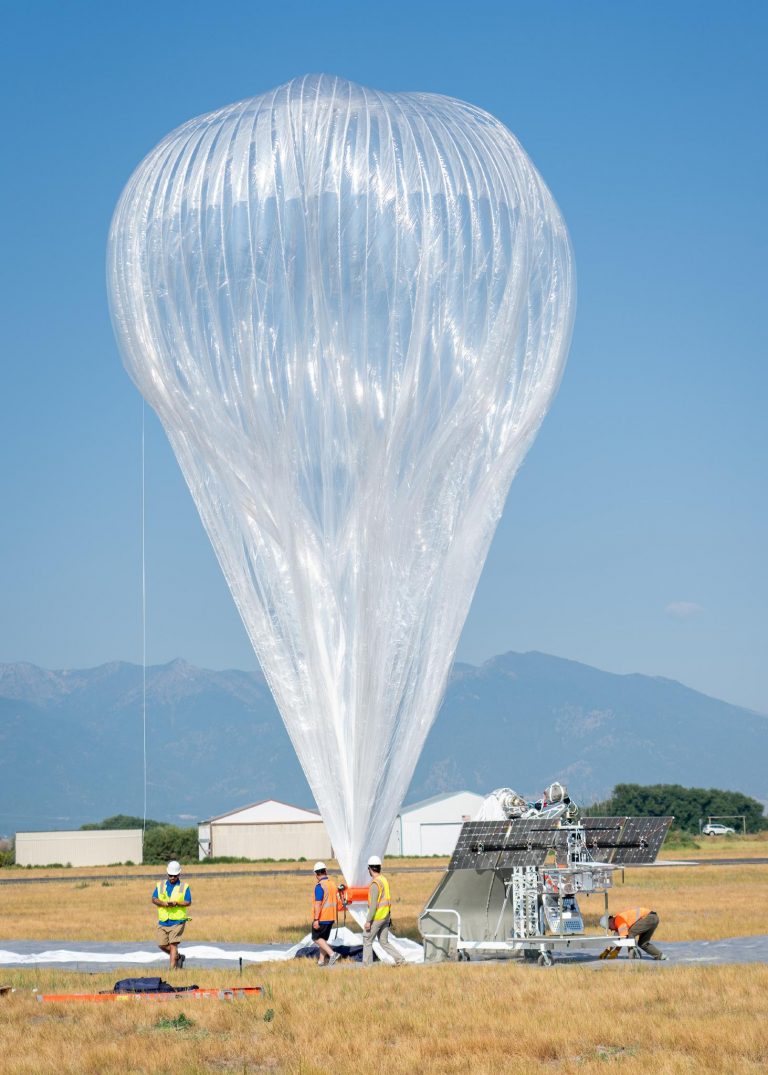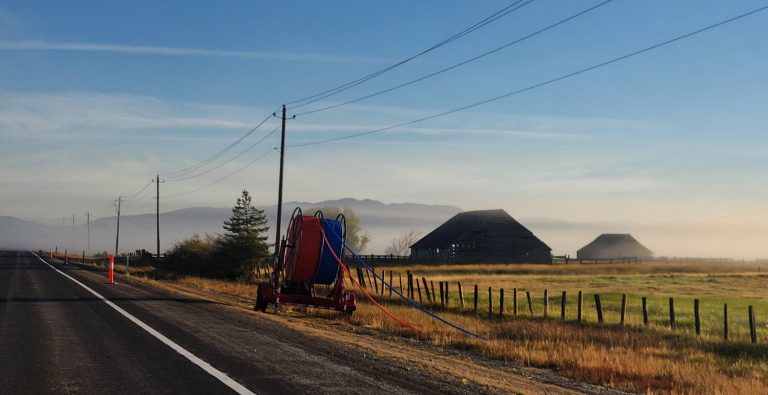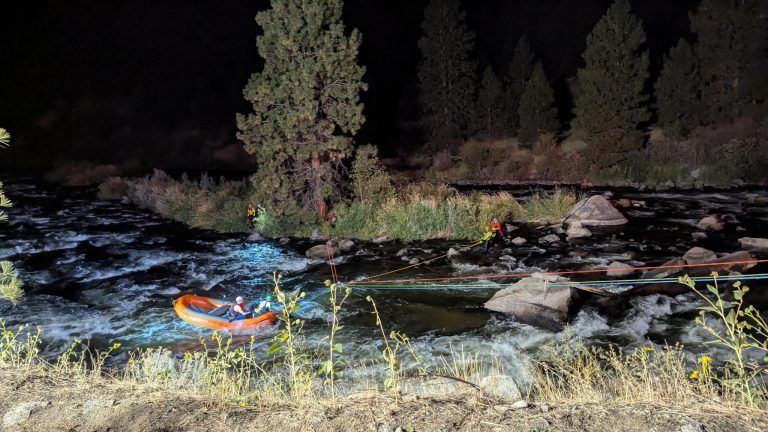BY MAX SILVERSON
The Star-News
Floating in the stratosphere thousands of feet above the West Mountain Complex fires is an experimental high altitude balloon carrying equipment to provide cell phone service to firefighters on the ground.
The Thunderhead Balloon, operated by the Sioux-Falls, South Dakota firm Aerostar, launched from Baker City, Oregon on Aug. 4.
It has floated above the fires near Cascade since then at an altitude of about 60,000 feet—roughly 20,000 feet higher than the highest commercial airline flights.
The balloon is 70 feet wide and 42 feet tall, but at such an altitude it is barely visible to the naked eye, appearing as a small white spec in the sky.
Suspended below the helium filled balloon is a host of equipment called STRATO (Strategic Tactical Radio and Tactical Overwatch).
The balloon itself is made from a specialized plastic film supported by structural “tendons.” Suspended below the balloon is a control unit that includes solar panels, batteries, flight safety, navigation and communications equipment, said Aerostar Culture and Communications Director Anastasia Quanbeck.
The equipment being tested above the fire includes a specialized LTE antenna that pivots to maintain signal between the Thunderhead Balloon and firefighters, miles below.
“In this particular test, cell phone connectivity for multiple devices was established within a 30-mile range,” Quanbeck said.
A Starlink internet receiver is also attached, providing continuous connection to the incident command post near Cascade.
Without a cell signal like this, firefighters would have to rely on radio communications, which do not typically work as well in rugged terrain.
The West Mountain Complex was chosen for the test flight to test the system in an area with particularly poor cell phone service, said Forest Service Public Affairs Specialist Evan Burks.
Also attached is an infrared camera, that can provide up to date information on the size of a fire, and identify the hottest parts of the fire.
Fire managers typically need to request infrared photographs from specialized aircraft that fly once per day at most, instead of being continuously available overhead.
The infrared sensor on the balloon was the first equipment to detect the Snag Fire, which was started by lightning on Aug. 5, 11 miles east of Cascade.
The balloon is designed to float at such a lofty height so it can remain stationary over a specific area for months at a time.
The balloon navigates by reading wind currents and adjusting altitude up or down to ride along to the desired location, Quanbeck said.
“It is like a ship navigating with the wind and sails, but in three dimensions,” she said.
The results have been promising.
“So far, this test has been successful at sending LTE signal and collecting infrared imagery,” Burkes said. “We are focused on testing the limitations of the technology and how it performs in different terrain and vegetation types.”
The goal of the project is to improve firefighter safety with real-time information, he said.
“We don’t anticipate this technology replacing traditional radios and other methods of communication, but see it as an added tool that will enhance firefighting efforts in the future,” Burkes said.
The project is supported by NASA and the U.S. Forest Service.
In response to a growing need to protect natural resources, homes and lives during wildfire outbreaks, Aerostar invested in an internal research and development project in 2021 to evaluate how balloons might be used to assist firefighters, Quanbeck said.
The West Mountain Complex was the second test of the system. Last year, a similar balloon traveled more than 16,000 miles over 70 days collecting information and testing equipment over fires in Montana, California, Idaho and Washington.
Aerostar did not disclose the price of this specific test, but asserted that the technology is far more affordable than the alternative of using satellites for similar missions.
It costs hundreds of thousands of dollars to operate a balloon for a months-long mission, and millions, if not tens of millions of dollars to launch and operate satellites or aircraft, Quanbeck said.
The Thunderhead balloon was intended to complete its test flight above the West Mountain Complex within about two weeks. A landing site will depend on weather and stratospheric conditions, Burkes said.
To descend, the balloon is steered to a safe area and the system tears a hole in the balloon. Two recovery parachutes are then deployed, one for the balloon, and a second for the payload carrying transmitters, cameras and other equipment.
Future uses
“This particular mission was to establish proof of concept using just one balloon,” Quanbeck said.
“Ideally, a constellation of six to eight Thunderhead balloons would be deployed over the entire Northwest during fire season so the balloons can work together to provide full coverage over affected areas and rotate in and out of target areas depending on the prevailing wind patterns,” she said.
In addition to cell service and infrared images, the STRATO flight test is expected to deliver results to several important long-term NASA research efforts in science and aeronautics.
The mission will also test technology to forecast emissions and air quality from wildfire smoke.




